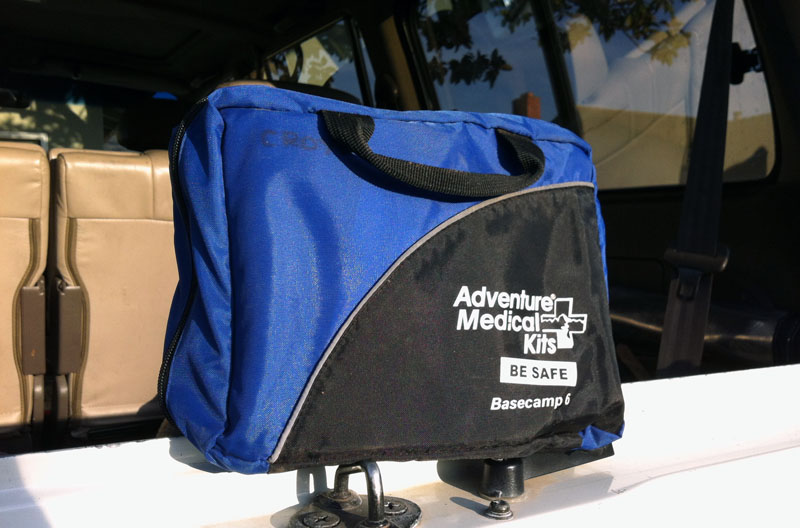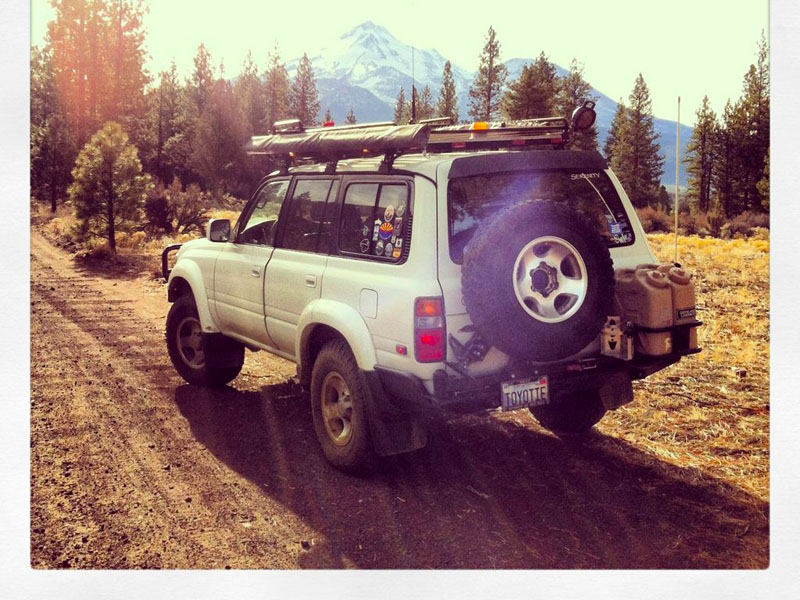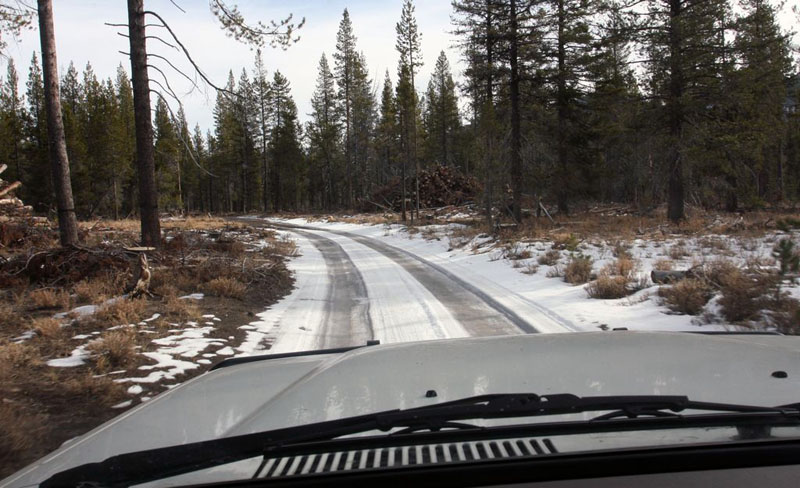First Aid Kit Maintenance

I recently read an article titled “Clean Up, Clear Out For The New Year” by Badlands Offroad Adventures. (Thanks to The 4×4 Podcast for pointing it out!) It was a good article and the first item on their list of things to do was to make or buy a first a first aid kit (FAK), or to do maintenance on your FAK if you already had one.
As soon as I read that, it struck a chord with me. I realized that it had been too long since I’d given proper attention to the FAK I keep in the Land Cruiser. From previous experiences with first aid kits (vehicular or otherwise) I knew that it was important to review and maintain the contents. And sure enough, when I inspected the kit I realized that a few things needed to be replenished.
So, let’s start at the beginning. First, you need to have a FAK. If you’re offroading, exploring, overlanding, whatever, it’s a good idea to have a FAK in your vehicle. It’s not reasonable to expect everyone to bring along a huge and expensive EMT trauma kit, but the contents should support likely incidents such as cuts, minor burns, headaches and so on. Badlands Offroad Adventures also has a solid article on buying/building FAKs so I’m not going to repeat that effort here.
In my case, I purchased a Base Camp 6 kit from Adventure Medical Kits. This model seems to have been replaced by the Mountain Series Weekender in their lineup. I actually have two of these kits (the other stays at home) that I purchased at a massive discount from Steepandcheap back in 2012. You need to use caution when buying a marked-down FAK, because of age and possibly storage issues, but there were no such problems with these.

The Base Camp 6 provided an excellent foundation for my needs, with ample room for expansion. Customizing your FAK to suit your needs (based on activities, users, etc.) is a good idea.For example, my kit supports not only me but my friends who are out hiking with me, my wife, and my daughter (kids = more bandaids and cleaners!)
Based on past experience, I added several packets of meds to mine: more Advil/ibuprofen, Imodium, Tecnu, single-use triple antibiotic ointment packets, etc. I also keep some related items like hand wipes, Purell, and sunblock handy in the passenger area of the Land Cruiser.
Once you’re comfortable with the contents of your kit, hopefully you’re good to go. Just don’t forget about maintaining it over time.
Two major issues of storing anything in your vehicle are vibration (particularly for offroaders) and temperature. The latter can be a big problem in hot weather and can accelerate breakdown of your FAK contents. Meds, protective gloves (especially latex), and some packets seem especially vulnerable to heat damage. I’ve seen latex gloves darken and disintegrate. I had a small bottle of aspirin in my Jeep FAK for a couple of years and the constant vibration had worn every pill down to about half its original size. I’ve also seen packets of liquids (like anti-itch gels) deteriorate and leak their contents, creating a gooey mess.
Replacement or supplemental contents for your FAK can come from many sources, such as from Adventure Medical Kits or other websites, or from stores like REI. It’s a good idea to shop around a bit and see what is available, and what best suits your needs. Sometimes you can get a refill kit of assorted packets that may be ideal for you, or you might be able to save money by simply restocking from a larger and more cost-effective bottle of Advil or whatever that you already have at home. Just remember to always mark expiration dates. Also watch for items that can become contaminated during use, where single-use packs may be preferable.
These issues are a big reason I think it’s important to regularly inspect and maintain my vehicular FAK. Another reason is that certain items like bandaids and Advil tend to get used up more often. Some items I only have one of, so when it gets used I’m out until I replace it. I try to remember to keep these things stocked, but sometimes after a trip it’s easy to forget.
To help me remember to review and take care of my FAK, I now use the same calendar reminder that I set up for topping-up my rechargeable batteries. We use a ton of rechargeable AA/AAA batteries (both at home and when out and about) and while the excellent Eneloop rechargeable batteries I use hold their charge very well over a long period of time (up to 90% remaining after a year), I top them all up every six months. I have the calendar for my Mac (and iPhone) set to remind me on January 1st and July 1st every year. Along with the batteries I now also inspect my FAKs.
Lastly, I want to mention training. Anyone can take an aspirin or apply a bandaid, but I recommend that – at a minimum – you get trained on basic first aid, and preferably CPR. More advanced training is great, but be sure to at least have the basics covered. Your local Red Cross chapter is a good place to start. NOLS WMI offers excellent Wilderness First Aid (WFA) and Wilderness First Responder (WFR) classes, and have recently partnered with REI to offer instruction at more locations around the country.
So keep your first aid kits and your skills up to date, and stay safe out there!
Welcome to BRnav.com!
The old broadsword.com domain here will be going to its new owner very soon, so you’ll want to update your bookmarks or at least take note of the new site.
You are now at BRnav.com.
Or more specifically, at BRnav.com/wordpress/. Which is good because the site homepage is just an “under construction” placeholder for now.
Beware broken links in the blog here especially until I can get around to making all of the domain name changes.
If you need to get in touch with me, you can email dave@ this new domain, or contact me via Twitter, Instagram, or Facebook.
Welcome and thanks for your patience!
Site News – Big Changes Coming Soon
If everything goes according to plan, there will be big changes coming to this site by the end of this month.
After being the only owner since the early days of the interwebs – 1996 if memory serves – I am selling the broadsword.com domain to a new business startup. It wasn’t an easy decision, and there will be a lot of work involved, but they made me an offer I couldn’t refuse.
After many years of enduring endless and irritating “I want the broadsword.com domain but I can’t pay much.” emails (and a few serious buyers) this new offer just came about in the last week or so. So there will be something of a scramble as I rush to get everything moved to its new home, updated and working properly again. Don’t be surprised to see major disruptions in site functionality, “work in progress” notices, and other mayhem over the next couple of weeks.
I hope to have this blog URL redirected for a short period of time, but that may not happen. When the big change hits, you’ll need to update your bookmarks to this blog, as well as update your RSS/email subscriptions. After the recent changes to those (after Feedburner finally croaked) I know that subscribers have already gone through a similar change very recently, and for that I apologize! Hopefully this will be the first and last time the site moves. I hope you’ll stick with me and that the move will eventually result in a better experience too.
I’ll post more details, like the new site URLs, when they are available.
Please stay tuned.
– Dave
Drive #12: East Side of Mt. Shasta

East Side of Mt. Shasta
Date Driven: 12/30/13
Length: 30.8 miles (20.8 miles on dirt roads, 10 miles paved)
My Drive Time: 1 hour 7 minutes
Start: Intersection of Highway 97 and Military Pass Road, N41º 33.530′ W122º 12.545′
End: Intersection of Pilgrim Creek Road and Highway 89, N41º 15.251′ W122º 04.504′
GPS Track: GPX or KMZ format. (right click -> Save As)
Source(s): This drive is very similar to Trail #1, Mt. Shasta Loop in Well’s Guide to Northern California Backroads & 4-Wheel Drive Trails. Military Pass Trail is Trail North Coast #34, and another Mount Shasta Loop variation is Trail North Coast #33, in Massey & Wilson’s Backcountry Adventures Northern California.
I checked the current status of Military Pass Road and others on this USDA Forest Service page.
Summary: This drive was a scenic detour from busy I-5 on our annual Oregon road trip. Starting northeast of Mt. Shasta from Highway 97, we took historic Military Pass Road south, then passed along Mt. Shasta’s eastern side on various Forest Service roads. The woods were lovely, and the trails generally easy. There are many camping options (some seasonal) and side trails, some leading to various Shasta trailheads.
Description: We began at Highway 97, at the intersection of the northern end of Military Pass Road. The latter is a dirt road that’s loosely based on an old pioneer route dating to the 1850s. Back in those days, you’d have to be wary of attacks by native American Indians as you went. Things seem calmer now that the emigrants and stagecoaches are gone.
The trail started off a little rough in places, which was fun, with some sections of moderate washboard. But it was still easy driving that only got easier the further south we progressed.
For several miles, the land on the north side of Military Pass Road is part of the Klamath National Forest and travel in that land is seasonally controlled. You’ll see signs about that. There are side trails and camping areas there, when you’re allowed.
In the land to the south (part of Shasta-Trinity National Forest) there are many other side roads, hiking trailheads, designated camping areas as well as opportunities for dispersed camping. There is also the Mount Shasta Wilderness with its own set of rules. Be sure to check regulations, fees and conditions if you plan to venture into these areas.
I chose my general route after seeing the Shasta Loop options in two of my guidebooks, and then consulting my maps. Then as we drove along, I made decisions based on the posted signs (both directional and detour) and by following the obvious (to me anyway) roads. We had no issues and made good time, which was an important consideration given how much driving I still had ahead of me that day.
We were fortunate to have dry conditions with little snow on the ground, which is definitely not normal for the end of December. The road here would usually be closed and/or impassible for much of winter. I confirmed online that the roads were open prior to attempting them, and knew we’d have clear, dry weather for the drive. One of my guidebooks advises against driving these trails when they are wet or snowy.
After several miles, the forest trails widen considerably, into what appear to be logging roads. They are well-graded and signed. Eventually (and unfortunately) they also become paved for the last 10 miles, before winding up at Highway 89, which we took back to I-5.
There were no services along this drive for us, although the permanent campgrounds probably have pit toilets when open. We didn’t visit any though, and I think they were all closed for the season. I didn’t have AT&T cell/3G signal for most of this drive, although I only checked a few times.
This was the longest and most fun offroad drive we had of our Oregon Road Trip. The area is very pretty, even where it’s been heavily logged. I’d like to return in the open season (April through mid-August) and explore the many side trails and do some camping here, in the shadow of stunning Mt. Shasta.
East Side of Shasta Photo Gallery
Disclaimer – This information is provided from the best of my recollection and is necessarily subjective. GPS data is from a personal device inside my vehicle, so coordinates will not be exact. Use of any of this information is at your own risk and responsibility – period. Conditions change (especially in winter), vehicles and driver skills vary, etc. and I have no control over these things. Don’t let anything written here override your own personal common sense or safety.

